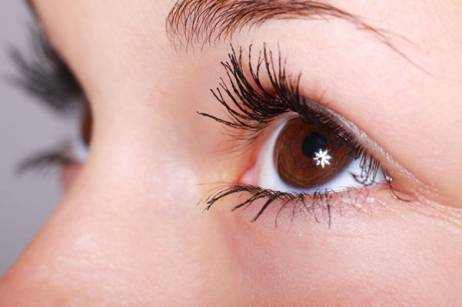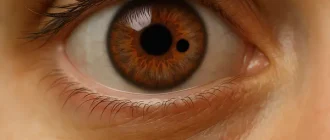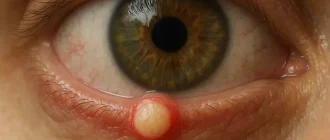A chalazion is a slow-growing, painless lump or cyst that forms in the eyelid due to a blocked meibomian gland. Unlike a stye, which is typically caused by an infection, a chalazion results from chronic inflammation. While generally harmless, large chalazia can cause discomfort and vision disturbances. Chalazia can affect one or both eyes and may reoccur if not properly managed.
Effectiveness of Treatment Methods (%)
| Treatment Method | Effectiveness (%) |
|---|---|
| Warm compresses | 50% |
| Lid massage | 20% |
| Steroid injections | 80% |
| Surgery | 95% |
| Laser-assisted drainage | 90% |
This chart compares the effectiveness of different treatment methods. Surgery and laser-assisted drainage show the highest success rates, while warm compresses and lid massage provide more moderate relief.
The condition is more common in adults than children and tends to develop gradually over weeks. People who have underlying inflammatory conditions such as rosacea, seborrheic dermatitis, or chronic blepharitis may be at higher risk. Proper eyelid hygiene and early treatment can significantly reduce the chances of recurrence.
What Causes a Chalazion?
A chalazion forms when an oil gland in the eyelid becomes clogged, leading to trapped secretions and inflammation. Common contributing factors include:
- Chronic blepharitis – inflammation of the eyelids, leading to gland dysfunction.
- Seborrheic dermatitis – a skin condition that increases oil production, contributing to blockages.
- Rosacea – a chronic inflammatory skin condition linked to facial redness and inflammation of oil glands.
- Poor eyelid hygiene – failure to clean the eyelids properly, allowing debris and bacteria to accumulate.
- Frequent eye rubbing – which can introduce bacteria, irritate glands, and worsen blockage.
- Hormonal fluctuations – changes in oil production can increase the likelihood of chalazion formation.
The chart illustrates the common causes of chalazion, with chronic blepharitis being the leading factor. Proper eyelid hygiene and reduced eye rubbing can help mitigate the risk.
Symptoms of a Chalazion
A chalazion often develops gradually and may present with the following signs:
- A painless, firm lump in the eyelid. Initially, the lump may be small and unnoticed, but over days or weeks, it can grow in size. Unlike a stye, it lacks tenderness or a pus-filled center, making it easy to differentiate. Some people may feel a sense of fullness in the eyelid.
- Mild redness or swelling around the lump. While the chalazion itself does not usually cause pain, surrounding tissues may become slightly inflamed, causing a puffy or swollen appearance. In severe cases, the lump can lead to eyelid drooping (ptosis).
- Blurred vision if the chalazion presses against the cornea. If the lump grows large enough, it can distort the shape of the eyelid and press against the eyeball, creating temporary vision disturbances like blurriness or light sensitivity.
- Occasional discomfort or sensitivity to touch. While most chalazia are painless, larger ones may exert pressure on nerve endings in the eyelid, leading to mild aching or discomfort when blinking or touching the affected area. Unlike an infected stye, the discomfort remains localized and does not come with intense throbbing or pus formation.
- Tearing or excessive eye watering. The presence of a chalazion may cause the eye to become irritated, triggering an overproduction of tears.
Diagnostic Methods
Ophthalmologists diagnose a chalazion based on a physical examination and patient history. The following methods help confirm the diagnosis:
- Slit-lamp examination (accuracy: 9/10, cost: $50-$200) – The doctor uses a specialized microscope with a bright light to magnify and examine the eyelid closely. The patient may feel mild discomfort from the bright light but should not experience any pain.
- Eyelid eversion (accuracy: 8/10, cost: included in exam fees) – The doctor gently flips the eyelid inside out using a cotton swab or their fingers to inspect the inner surface. Patients may feel a slight pulling sensation, but the procedure is quick and generally painless.
- Ocular ultrasound (accuracy: 9/10, cost: $100-$300) – A handheld probe is placed against the closed eyelid to generate an image of deeper structures. Patients feel slight pressure during the procedure, but it is non-invasive and does not cause pain.
- Meibomian gland function test (accuracy: 8/10, cost: $100-$250) – Assesses the oil-producing function of the glands to determine if dysfunction is present.
Modern Treatment Options
Treatment varies depending on the size and persistence of the chalazion. Innovative approaches include:
Non-Invasive Treatments
- Warm compresses – Applied for 10-15 minutes, four times daily, to soften the blockage and encourage drainage. This method is most effective in the early stages.
- Lid massage – Helps promote oil drainage from the gland, reducing swelling over time.
- Antibiotic and anti-inflammatory drops – Effective if an infection is suspected, reducing inflammation and preventing bacterial growth.
- Over-the-counter artificial tears – Provide relief from irritation and dryness associated with chalazia.
- Eyelid cleansing solutions – Specialized wipes or diluted baby shampoo can help maintain hygiene and prevent further blockage.
- Dietary adjustments – Increasing omega-3 fatty acid intake can improve gland function.
Minimally Invasive Procedures
- Intralesional corticosteroid injection (success rate: 80%, cost: $100-$250) – A small needle is used to inject steroids directly into the chalazion, reducing inflammation. Patients may feel mild stinging but experience rapid improvement within days.
- Radiofrequency meibomian gland expression (success rate: 85%, cost: $200-$400) – A device delivers controlled heat to melt the trapped oil and unclog the gland. The procedure causes slight warmth and pressure but is generally well-tolerated.
- Intense pulsed light (IPL) therapy (success rate: 75%, cost: $300-$600) – A non-invasive option that reduces inflammation and improves oil gland function by using light energy. Patients may feel warmth but experience minimal discomfort.
Surgical Treatment
- Incision and curettage (success rate: 95%, cost: $300-$600) – The doctor makes a small incision and scrapes out the contents of the blocked gland. Local anesthesia ensures that patients feel no pain during the procedure.
- Laser-assisted drainage (success rate: 90%, cost: $500-$800) – A precise, minimally invasive alternative to traditional surgery, with reduced healing time and scarring risk. Patients may feel slight warmth but no significant discomfort.
- Cryotherapy (success rate: 85%, cost: $400-$700) – Uses cold therapy to shrink the chalazion, preventing recurrence in some patients. A cooling sensation is common but is not painful.
Patient Satisfaction with Different Treatments (%)
| Treatment Method | Satisfaction (%) |
|---|---|
| Warm compresses | 60% |
| Lid massage | 55% |
| Steroid injections | 85% |
| Surgery | 90% |
| Laser-assisted drainage | 95% |
This chart presents patient satisfaction levels for different treatments. Laser-assisted drainage and surgery have the highest satisfaction rates, while warm compresses and lid massage offer moderate relief.
Editorial Advice
Reyus Mammadli, healthcare advisor, emphasizes the importance of early intervention: “Warm compresses and proper eyelid hygiene can prevent chalazion formation. If home treatments fail, seek medical attention to avoid complications.”
Additional expert recommendations include:
- Avoid squeezing or popping the chalazion to prevent secondary infections.
- Use artificial tears to maintain eye lubrication and reduce irritation.
- Consider omega-3 supplements to improve meibomian gland function.
- Schedule regular eye exams if you have a history of recurrent chalazia.
- Maintain proper eye hygiene by regularly cleaning the eyelids and avoiding excessive eye rubbing.
By staying informed and proactive, individuals can manage and prevent chalazion development effectively.





